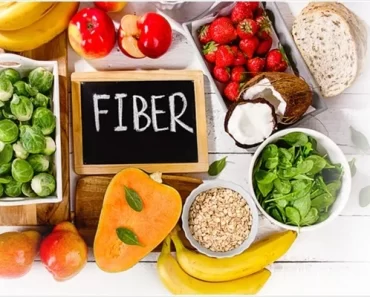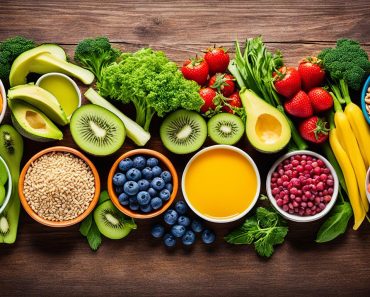Fiber is an essential component of a healthy diet, yet many people overlook its importance. Understanding the role of fiber can help you make better dietary choices and improve your overall health. This article explores the types of fiber, their health benefits, recommended daily intake, and ways to incorporate more fiber into your diet.
Understanding Fiber
Dietary fiber is a type of carbohydrate found in plant-based foods that the body cannot digest. Unlike other carbohydrates, fiber passes through the digestive system relatively intact, which means it does not get broken down into sugar molecules. There are two main types of dietary fiber:
Soluble Fiber: This type of fiber dissolves in water to form a gel-like substance. It can help lower blood cholesterol and glucose levels. Soluble fiber is found in foods like oats, beans, lentils, apples, and citrus fruits.
Insoluble Fiber: This type of fiber does not dissolve in water. It helps add bulk to the stool and promotes the movement of material through the digestive system. Insoluble fiber is found in whole grains, nuts, beans, and vegetables like cauliflower, green beans, and potatoes.
Health Benefits of Fiber
Incorporating enough fiber into your diet offers numerous health benefits:
1. Improves Digestive Health
Fiber is best known for its role in promoting healthy digestion. Insoluble fiber adds bulk to the stool, which helps prevent constipation and promotes regular bowel movements. Soluble fiber, on the other hand, can help prevent diarrhea by absorbing water and solidifying stool.
2. Helps Control Blood Sugar Levels
Soluble fiber slows the absorption of sugar, which can help improve blood sugar levels and prevent spikes in glucose. This is particularly beneficial for people with diabetes or those at risk of developing the condition.
3. Lowers Cholesterol Levels
Soluble fiber can help lower total blood cholesterol levels by reducing levels of low-density lipoprotein (LDL), also known as “bad” cholesterol. High-fiber foods can also reduce blood pressure and inflammation, which are risk factors for cardiovascular disease.

4. Aids in Weight Management
High-fiber foods tend to be more filling than low-fiber foods, so you’re likely to eat less and stay satisfied longer. This can help with weight management and prevent overeating. Fiber also helps regulate hunger hormones, which can contribute to maintaining a healthy weight.
5. Supports Gut Health
Fiber acts as a prebiotic, which means it feeds the beneficial bacteria in the gut. A healthy gut microbiome is essential for overall health, influencing everything from immune function to mood. A diet rich in fiber supports the growth of good bacteria and enhances gut health.
Recommended Daily Intake
The recommended daily intake of fiber varies by age and gender:
Men under 50: 38 grams per day
Women under 50: 25 grams per day
Men over 50: 30 grams per day
Women over 50: 21 grams per day
Unfortunately, many people fall short of these recommendations. The average fiber intake in the United States is about 15 grams per day, well below the recommended levels.
How to Increase Fiber Intake
Increasing your fiber intake is easier than you might think. Here are some practical tips to help you boost your daily fiber consumption:
Eat More Whole Grains: Choose whole-grain products over refined grains. Opt for brown rice, whole-wheat pasta, quinoa, and oatmeal instead of white rice, regular pasta, and sugary cereals.
Include Fruits and Vegetables: Aim to fill half your plate with fruits and vegetables at each meal. Enjoy a variety of colors and types to ensure you’re getting a range of nutrients and fiber.
Add Legumes: Beans, lentils, and peas are excellent sources of fiber. Add them to soups, salads, and casseroles for an easy fiber boost.
Snack on Nuts and Seeds: Almonds, chia seeds, flaxseeds, and sunflower seeds are rich in fiber and make great snacks. Add them to yogurt, smoothies, or salads for extra crunch and nutrition.
Incorporate Fiber-Rich Foods into Your Diet: Start your day with a high-fiber breakfast, such as whole-grain cereal or oatmeal topped with fruit and nuts. Swap refined snacks like chips and cookies for fresh fruits, vegetables, or whole-grain crackers.
Read Food Labels: Check the nutrition labels on packaged foods to find products with higher fiber content. Look for items that provide at least 3 grams of fiber per serving.
Potential Side Effects and Tips for Increasing Fiber Intake
While fiber is beneficial for health, increasing your intake too quickly can cause digestive discomfort, such as bloating, gas, and cramping. Here are some tips to help you increase your fiber intake gradually:
Increase Fiber Slowly: Gradually add more fiber to your diet over a few weeks to give your digestive system time to adjust.
Drink Plenty of Water: Fiber works best when it absorbs water, so make sure you drink plenty of fluids throughout the day.
Spread Fiber Intake Throughout the Day: Instead of eating a large amount of fiber in one meal, spread it out over several meals and snacks.
Fiber plays a crucial role in maintaining overall health and wellness. From improving digestive health to aiding in weight management and lowering cholesterol levels, the benefits of a fiber-rich diet are substantial. By understanding the types of fiber and incorporating a variety of fiber-rich foods into your daily meals, you can enjoy these health benefits and improve your quality of life.
Making small changes, such as choosing whole grains, adding more fruits and vegetables, and incorporating legumes into your diet, can significantly increase your fiber intake. Remember to increase fiber gradually and stay hydrated to minimize any potential side effects. By prioritizing fiber in your diet, you can support your digestive health, manage your weight, and reduce the risk of chronic diseases.






